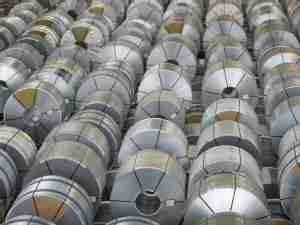There’s no place like Argentina for G-20 finance ministers to talk about rising global protectionism: the host of this weekend’s meeting is home to some of the world’s highest tariffs.
President Mauricio Macri took office in late 2015 with the promise to embrace free trade, yet his government has continued to impose import duties at the same pace as the protectionist government it succeeded, a Bloomberg analysis shows. Argentina’s import tariffs are also higher than those of peer G-20 nations, according to trade-weighted averages calculated by the World Trade Organization.
While opening up the economy is part of Macri’s plans to boost growth, the reality is that many local businesses have long relied on protectionism to survive and thrive. Weaning industry off those crutches has proven painful in the past and remains challenging now, according to Shannon K. O’Neill, senior fellow for Latin American studies at the Council on Foreign Relations.
“It’s hard to open up without pain and job losses and things that the Macri administration is trying to avoid,” she said. “Even with a government that’s very globalization friendly, very market friendly, it’s hard to reorient the economy.”
Making the task even more difficult is Macri’s commitment to cut subsidies and public spending as part of a financing agreement with the International Monetary Fund.
Not So Different
Macri’s administration applied tariffs 13 times on products ranging from dishwashers to carpets during its first 30 months in office. President Cristina Fernandez de Kirchner’s government imposed tariffs 10 times during a comparable 30-month span, though it used many other forms of red tape to prevent imports. Macri’s government has opened or continued 23 anti-dumping investigations, four of which are still outstanding. Kirchner had 26 cases during her final two and a half years in office.
Confronted with the numbers, Argentina’s Commerce Secretary Miguel Braun said the country’s path for trade integration should be “gradual.”
“We’re not trying to open up unconditionally as in other moments, nor to shut everything down,” he wrote in an email to Bloomberg. “Considering our economic reality and the global conditions, we’re seeking an insertion that allows us to grow and reduce poverty.”
Part of the challenge for Macri stems from threats of a global trade war, which will be at the forefront of the G-20 meetings in Buenos Aires. Trade tensions have only escalated since the U.S. withdrew its signature from the G-7 communique at the end of the group’s June summit in Canada. Rising trade barriers abroad challenge Macri’s ability to justify opening up Argentina.
Then there’s Mercosur, the South American trade group that determines tariffs on many of its imported products. As one of its biggest members, Argentina holds sway over Mercosur’s decisions. Despite his public complaints, the bloc hasn’t cut tariffs since Macri came to power.
Old Scars
Macri has made some pro-trade strides, to be sure. He eliminated or reduced import barriers on computers and tablets and he’s helping to negotiate a trade agreement between Mercosur and the European Union. He also brokered a deal with President Donald Trump to avoid U.S. levies on steel and aluminum imports.
“Macri’s government aspires to open up,” says Marcelo Elizondo, general manager of Consultora DNI, a trade firm in Buenos Aires. But “Argentina is still a closed economy.”
A quick stroll through downtown Buenos Aires shows how Macri’s efforts are falling short for consumers. For example, a 16 percent tariff on imported cellphones boosts the price of Apple’s iPhone X to the equivalent of $1,880 in Argentina, compared to $999 in the U.S. and $1,006 in Chile, a pro-trade nation. Even Huawei and Samsung phones, which are locally assembled, are more expensive due to higher local production costs and lower competition.
The easy-sounding solution—quickly lifting tariffs—would revive old scars of shuttered factories, says Mark Healey, a historian at the University of Connecticut who has published books on Argentina. That’s what happened in the 1990s, he said, when former President Carlos Menem quickly cut import tariffs and scrapped quotas, triggering widespread job losses.
“There is a broad sense that a relatively sudden exposure to imports was devastating in the 1990s,” said Healey, explaining why Macri’s trade actions often “seem to cut against his free-trade declarations.”









